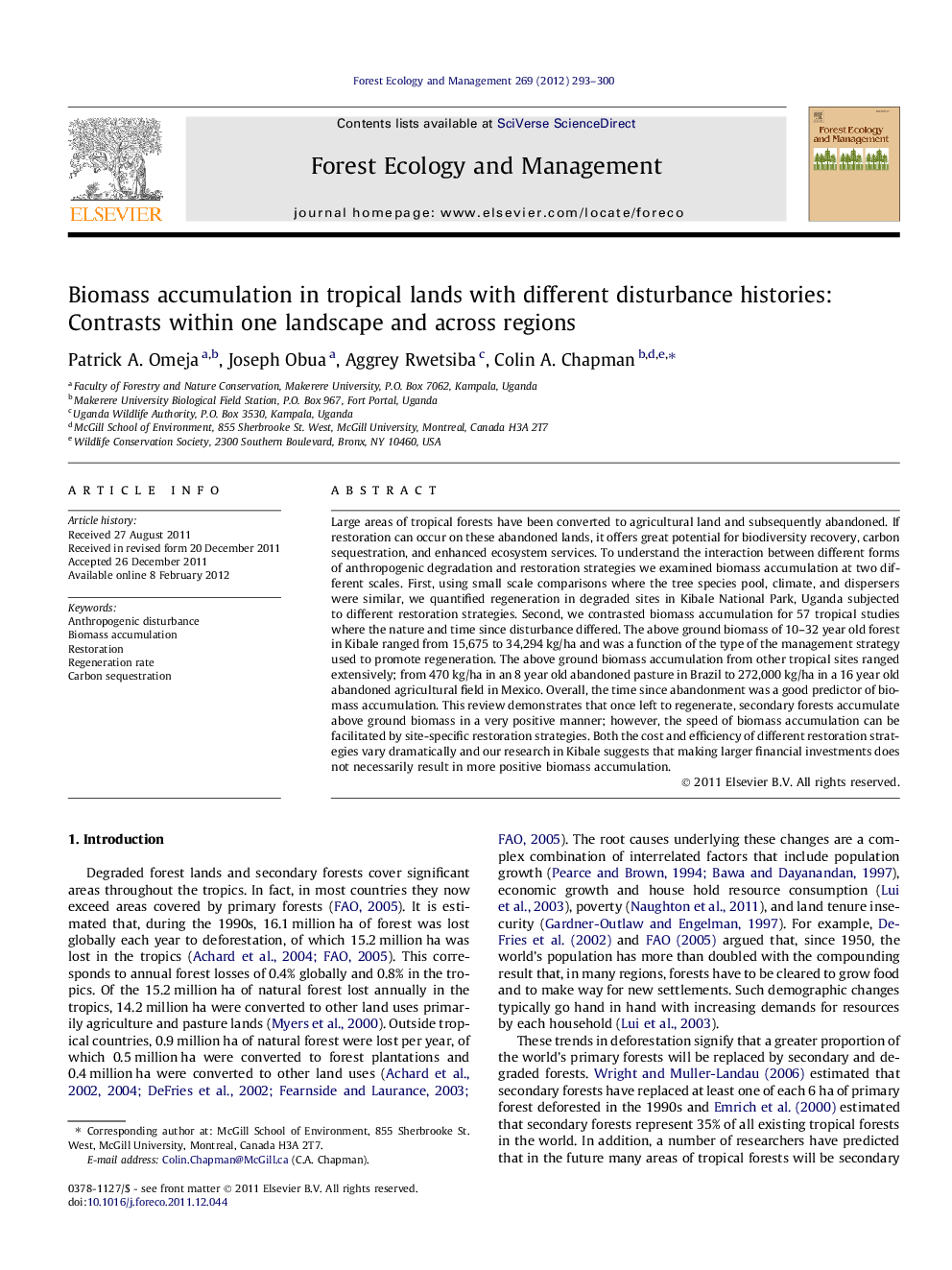| کد مقاله | کد نشریه | سال انتشار | مقاله انگلیسی | نسخه تمام متن |
|---|---|---|---|---|
| 87466 | 159251 | 2012 | 8 صفحه PDF | دانلود رایگان |

Large areas of tropical forests have been converted to agricultural land and subsequently abandoned. If restoration can occur on these abandoned lands, it offers great potential for biodiversity recovery, carbon sequestration, and enhanced ecosystem services. To understand the interaction between different forms of anthropogenic degradation and restoration strategies we examined biomass accumulation at two different scales. First, using small scale comparisons where the tree species pool, climate, and dispersers were similar, we quantified regeneration in degraded sites in Kibale National Park, Uganda subjected to different restoration strategies. Second, we contrasted biomass accumulation for 57 tropical studies where the nature and time since disturbance differed. The above ground biomass of 10–32 year old forest in Kibale ranged from 15,675 to 34,294 kg/ha and was a function of the type of the management strategy used to promote regeneration. The above ground biomass accumulation from other tropical sites ranged extensively; from 470 kg/ha in an 8 year old abandoned pasture in Brazil to 272,000 kg/ha in a 16 year old abandoned agricultural field in Mexico. Overall, the time since abandonment was a good predictor of biomass accumulation. This review demonstrates that once left to regenerate, secondary forests accumulate above ground biomass in a very positive manner; however, the speed of biomass accumulation can be facilitated by site-specific restoration strategies. Both the cost and efficiency of different restoration strategies vary dramatically and our research in Kibale suggests that making larger financial investments does not necessarily result in more positive biomass accumulation.
► We examined biomass accumulation locally (Kibale National Park, Uganda) and globally.
► Above ground biomass in Kibale was a function of management strategy.
► Globally biomass accumulation was predicted by time since abandonment.
► Larger financial investment did not result in more positive conservation gains.
Journal: Forest Ecology and Management - Volume 269, 1 April 2012, Pages 293–300